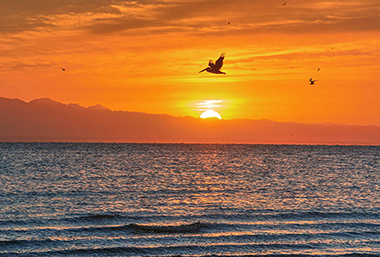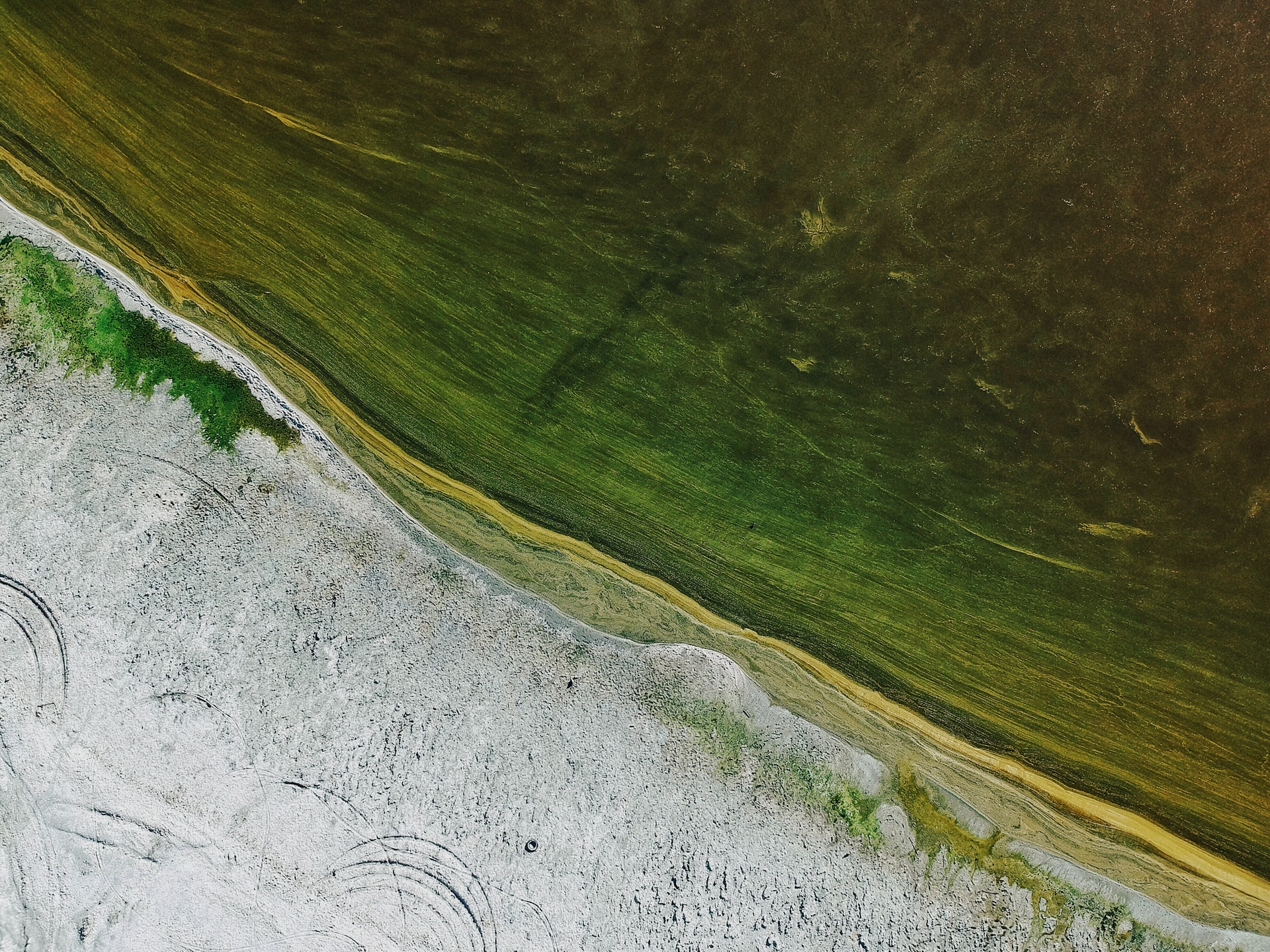
California’s Salton Sea is a fertile oasis in the hostile desert of southeastern California, adopted by millions of birds migrating along the Pacific Flyway. As California’s largest lake, it stretches across almost 35 miles in a remote, below sea-level valley in the southeastern corner of the state. The Sea faces a host of challenges, including a declining water supply, rising salinity, very high levels of nutrients that generate excessive algal growth and very low oxygen levels, and, to date, a glaring disconnect between the rate of change and the rate of efforts to address that change.
The Salton Sea challenges our conceptions about conservation priorities. It is a heavily human-altered landscape and often smells from the overabundance of life and death it hosts – traits that make it difficult to embrace and champion. Yet this agricultural drainage water, rich with the fertilizers applied to fields, has created an extraordinarily productive ecosystem at the Sea. Fish and invertebrates swim through its turbid waters and dig through its rich sediments, feeding enormous numbers of pelicans, cormorants, skimmers, herons, egrets, rails, terns, grebes, ducks, geese, and many other birds. In all, more than 420 species of birds – the second highest bird count in the country – have been spotted at the Sea and its environs. Audubon California calls it “one of the most important places for birds in the Western United States.” The Salton Sea offers invaluable bird habitat, all the more important since California has lost more than 90 percent of its pre-development wetlands, leaving the birds with few other places to go.
California’s statutory and contractual responsibilities to the Salton Sea arise from the state’s commitments to facilitate the nation’s largest agriculture-to-urban water transfer, moving water from the Imperial Valley to San Diego County. In 2015, the transfer supplied almost 20% of the county’s total water use; by 2020, as the transfer volumes increase, it will supply about 1/3 of the county’s water use. The state’s commitments are intended to improve California’s water supply reliability and protect public health and the fish and wildlife historically dependent on the Salton Sea. In October, 2015, California affirmed its responsibility to protect the Salton Sea. The governor’s Salton Sea Task Force set admirable short-term habitat and dust suppression goals. The 2016/17 budget contains $80 million for Salton Sea projects through 2018/19, a small fraction of the total investment needed but an excellent start. More than $30 million in additional funding has already been dedicated for other projects, such as the Species Conservation Habitat project near the New River delta and the Red Hill Bay project near the Alamo River delta. And an additional $200 million may be available, if voters approve Proposition 68 on the June 2018 ballot.
In October, 2015, the state hired a new Assistant Secretary of Salton Sea Policy and set aggressive acreage goals for habitat and dust suppression projects at the Sea. To date, California still has yet to translate its commitments into actual projects on the ground. Unlike the challenges of protecting habitat and human health in most of the water-starved West, the greatest obstacle to Salton Sea action is not a lack of water but rather a lack of political will. With the $80 million already in Salton Sea accounts and with a dedicated effort from state staff and local stakeholders, we could celebrate the completion of more than a thousand acres of high-quality, dust-suppressing habitat projects by the end of next year. This short-term success is well within reach, but it requires dedicated project management, urgency, and commitment, all of which have been in short supply so far.
The Pacific Institute has played an active role at the Sea for more than twenty years. The Institute has produced three leading reports on the Sea, including the September 2014 Hazard’s Toll, outlining the importance of the Sea and the likely economic consequences of failing to act on its behalf. We have developed restoration concepts for the Sea, participated on the state’s Salton Sea Advisory Committee and in the current Salton Sea Management Program workgroups, and we continue to work actively with state agencies and local stakeholders to get real habitat constructed on the ground to benefit at-risk species and to diminish the amount of dust blowing off of the Sea’s exposed lakebed. Meanwhile, we continue to promote the importance of the Sea for the state’s water supply reliability. See the links below for more information on our Salton Sea efforts.
Links to Salton Sea Resources
Current Information
Current Information on the Salton Sea
Infographic
Salton Sea Import/Export Plans (2015)
Blogs
Water Program Senior Research Associate Michael Cohen has written several blogs and opinion pieces on the Salton Sea:
Fits and Starts at the Salton Sea
New Hope for the Salton Sea
Another Grim Day for the Salton Sea
State Not Meeting Salton Sea Responsibilities
Save the Salton Sea, with Gary Wyatt
Media
At the 2017 Martz Summer Conference in Boulder, Colorado, Michael Cohen described the challenges facing the Salton Sea and the issues with California’s limited activities to date.
Reports
Hazard’s Toll: The Costs of Inaction at the Salton Sea (2014)
Hazard: The Future of the Salton Sea with No Restoration Project (2006)
Haven or Hazard: The Ecology and Future of the Salton Sea (1999)
Letters to State Water Resources Control Board
In collaboration with other organizations, the Institute has recommended several specific actions to accelerate California’s implementation of habitat and dust suppression projects at the Salton Sea.
Upcoming Presentations
Check our news page for notice of upcoming staff presentations on the Salton Sea.


